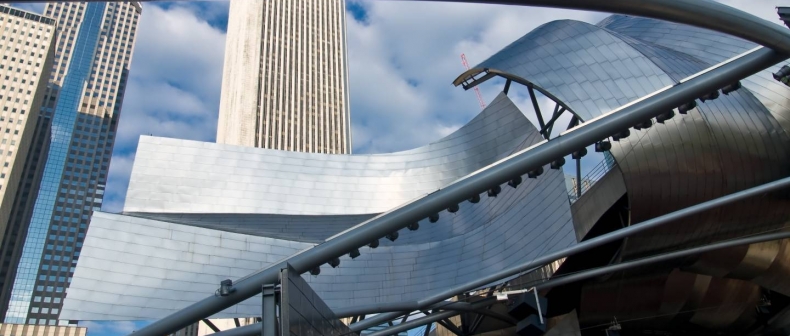
Image: Flickr
A couple of weeks ago, an exodus of Torontonians found itself a temporary home in Chicago. And while most people were there solely for the Pitchfork Music Festival, it’s still hard to find yourself in the middle of the Second City without leaving with a vague sense of wonder.
As a Torontonian, there’s something about that city that gets to me. You can walk through neighbourhoods like Lincoln Square, the Loop, and Wicker Park, and you can pick up on their Toronto analogs almost automatically – places like Parkdale, Yonge and Dundas, and West Queen West. Sure, the skyscrapers in downtown Chicago are denser and taller, and the houses have cooler fire escapes. But the way the city and its neighbourhoods work makes intuitive sense.
I overheard an urban planner in the airport customs line as he explained to his neighbours that Chicago and Toronto are actually quite similar. These cities are in constant comparison. Chicago, the big skyscrapered city with the killer waterfront – and Toronto, the Hogtown of the North, where many of the architects who built Chicago’s skyline also left their Canadian imprint.
When you’re there, it’s hard not to feel the pangs of city-envy. Who doesn’t wish they had the Frank Gehry-designed Millennium Park on their waterfront (rather than Toronto’s unfortunate condo-front situation)? And how about a subway system with eight lines and 24-hour service? I think that’d be pretty cool.
Chicago and Toronto could take a lot of tips from one another. Each city can experiment with its public green space, or garbage collection, or crime prevention – but if there’s a living example in another city already, it makes sense to look up and listen.
Okay, now let’s talk about mirror neurons. These are the cells in your brain that keep tabs on what the people around you are doing. They’re kind of like the urban planners of different cities: they work specifically on their own urban space, but they’re also always noticing what’s going on elsewhere. So when you watch someone scratch their head, for example, the part of your brain that would be active if you yourself were scratching your head will actually light up too – just because you watched someone else do it. Those parts of your brain lighting up are your mirror neurons talking.
Mirror neurons were first discovered in the 1980s in monkeys. Since then, research on humans has shown that we have many of the same mirror neuron systems, which respond both to action and to observing that action in other organisms. As far as charted brain territory goes, human mirror neurons are generally found in the sensorimotor parts of your brain – as in, the brain areas that keep track of and control your own movements and senses. But more recent work has also found that language and even emotion could make up parts of the human mirror system. Observing emotions like disgust, happiness, or pain will actually light up the corresponding areas in your own brain – regions like the anterior insula and anterior cingulate cortex. All in all, that means watching other people speak or emote actually creates a similar brain state in you as the observer.
The implications of mirror neurons are actually pretty philosophical. Some researchers think that mirror neurons are what allow us to understand the intentions of others. So when your friend scratches his head, and your brain is activated as if you were scratching your own head, it’s kind of like your brain is recreating that process in order to understand what the other person was going through. It’s linked to what people call “theory of mind” – an important developmental milestone in humans, in which you can understand that other people can have different beliefs and mental states from your own.
Other researchers have tried to use mirror neurons to explain empathy. If our brains are mirroring one another as we perform actions, then those must be the building blocks for being able to understand someone else’s mental states, right? That’s certainly how popular science sources like to spin it – although the empathy connection can be a bit of a stretch sometimes, and has also faced some flack in the scientific community.
The empathy link has also been connected with research on autism, which has yielded controversial and not to mention contradictory findings so far. Some studies find that children with autism don’t show the same mirror neuron activity when they watch other people perform actions. The conclusions often report this as evidence for the dysfunctional sense of empathy characteristic of autism. Yet other studies have found that the mirror neuron system is actually intact in people with autism.
Like most brain research, this stuff is in its early stages. With a lot of factors yet to be accounted for, it’s hard to tell what might be influencing the results, and what mirror neurons are actually for in the first place. It’s similarly difficult to know whether the things that work in other cities would work in Toronto. Our urban planners might be keeping tabs on places like Chicago or Amsterdam or New York, but we don’t know how much those cities are actually influencing the recommendations that get made for our own city. And now probably everyone’s scratching their head.
—
Erene Stergiopoulos writes about brains and neighbourhoods for Toronto Standard. Follow her on Twitter @fullerenes.
For more, follow us on Twitter at @TorontoStandard and subscribe to our newsletter.














